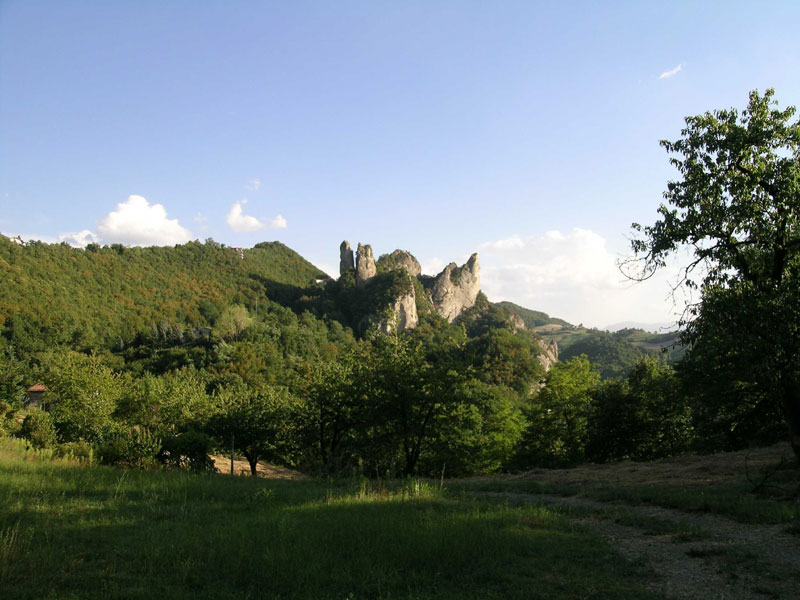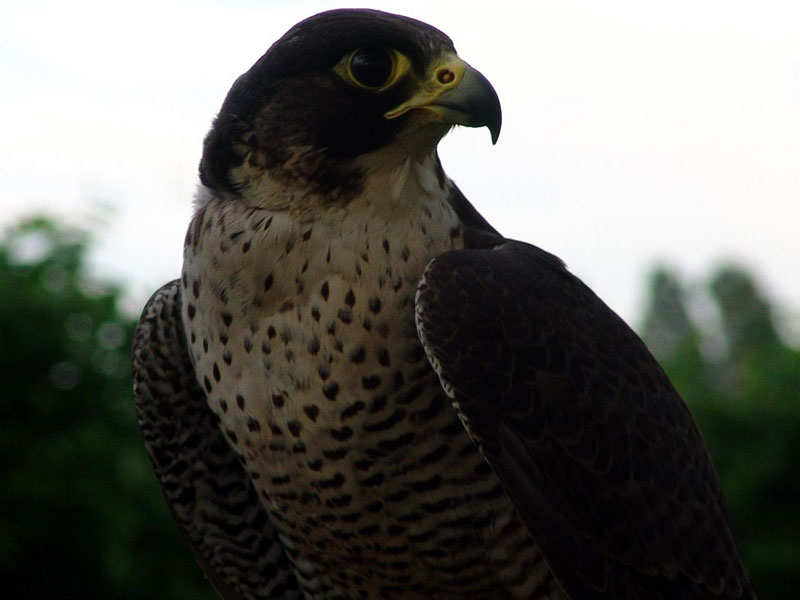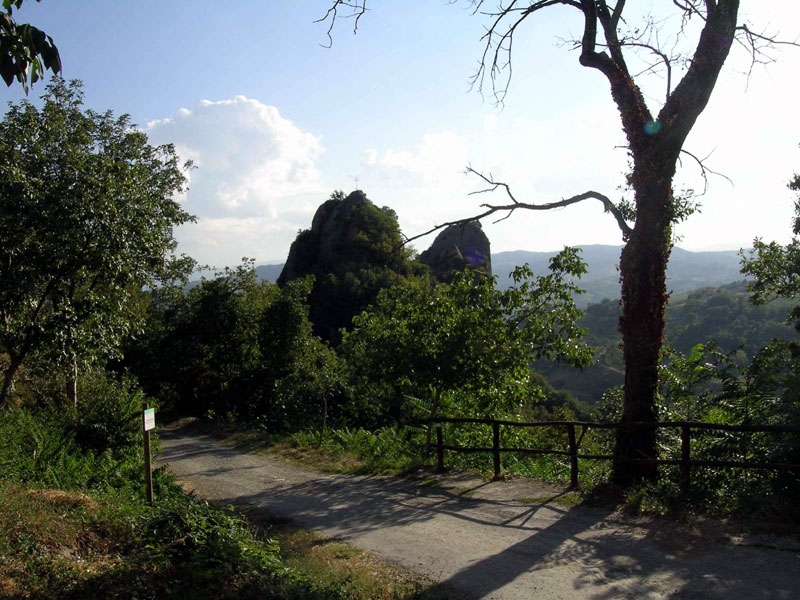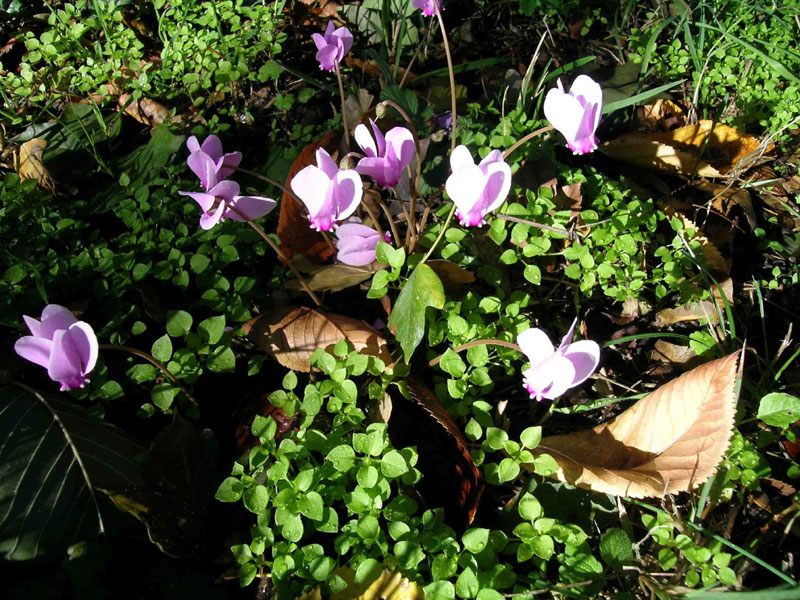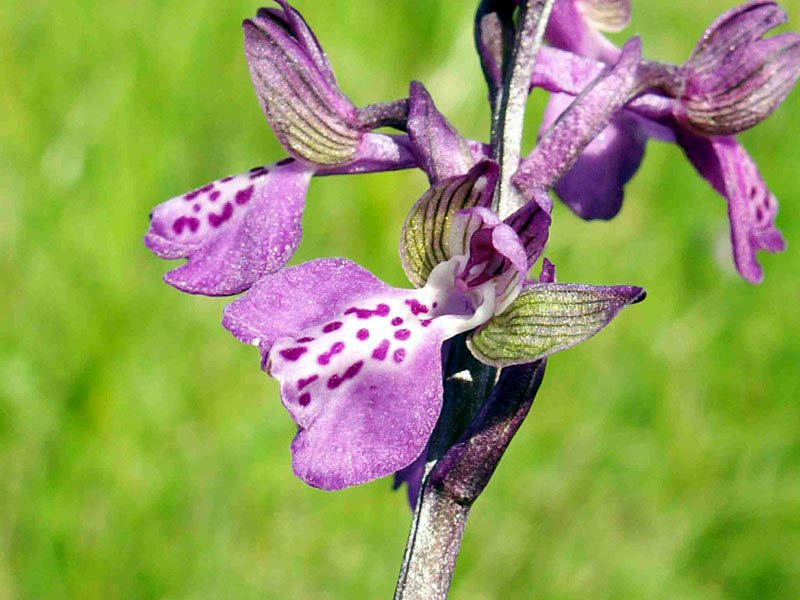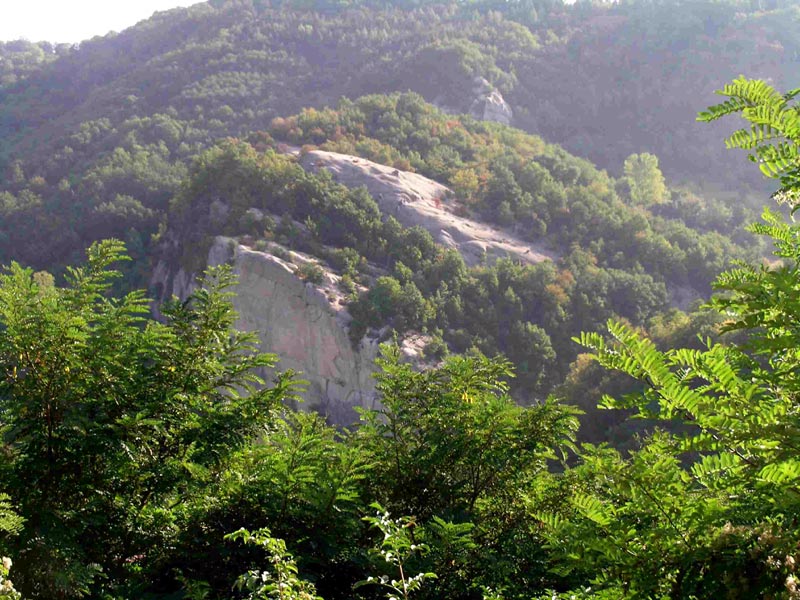Parco Regionale dei Sassi di Roccamalatina
www.parchiemiliacentrale.itProtected Area
Identity Card
- Land Surface Area: 2'300.17 ha
- Protected flora: 5 species (Italian text)
- Protected wildlife: 64 species (Italian text)
- Habitats: 18 types (Italian text)
- Regions: Emilia Romagna
- Provinces: Modena
- Municipalities: Guiglia, Marano sul Panaro, Zocca
- Establishment Measures: LR 11 02/04/1988 - L.R. n.6 del 17/02/2005
- PA Official List: EUAP0179
- Park Authority: Ente di gestione per i Parchi e la Biodiversità Emilia Centrale
The Sassi
A landscape between clays and sandstones
The woody slopes characterizing the protected area clash with the large underlying areas, with gentle meadows and gullies.
The presence of such different hilly morphologies is linked to the particular geological structure of Appennino Emiliano, characterized by the contact among rocks with a different level of erosion.
The clayey formations
The clays outcropping in the territory of the Park belong to the characteristic rocky groups - mainly clayey - characterizing most of the Apennines of Emilia. Their chaotic asset is of particular importance: here clays and other rocks are blended together, giving to the complex its variegated color.
The Sandstones in the Sassi
The particular sandstones originating the imposing towers of the Sassi are made of very rough granules which can be distinguished also by looking at a sample with the naked eye: on the rough surfaces, often concealed by white spots of crusty lichens you can easily see the granules of light grey quartz and of white feldspars, while darker particles of other small rocky fragments are much rarer.
Fauna
A Site of Community Interest and Special Protection Area for the fauna according to the Habitat Directive, the Park is characterized by a considerable variety of ecosystems: woodlands, clearings, rocks, caves, watercourses.
The invertebrates include the Freshwater Crayfish and Lucanus cervus. As far as fish species are concerned, Chondrostoma genei, Vairone, and Spined Loach are worth a mention.
Among the amphibians there are various species of newts, like the Cave Salamander, the Alpine Newt, and the Crested Newt, as well as various frog species, like the Italian Frog and the Agile Frog. Among the reptiles, there is the one and only station of Southern Smooth Snake for the Province of Modena. There is a wide range of birds, with over 80 nesting species among which the Peregrine, the Nightjar, the Tawny Pipit, and the Ortolan Bunting. There are over 40 species of mammals (see Table 3) among which the Deer, the Badger, the Fox, the Porcupine, and various species of bats. Sporadically, the presence of the wolf has been recorded.
Flora
The plant landscape shows a wise and methodical action of man: the stable meadows crossed by rows of cherry trees and planted, the arable land and the vineyards have occupied the areas with less slope and better exposed over the centuries, relegating the woods to the less points favorable. A transitional element is the presence of strips of fruit chestnuts, with even centuries-old plants.
In these areas, besides the chestnut, there are the Ginestra of the charcoal burners, the Felce Aquilina and, more localized, the Brugo Arboreo. Well represented is the shrubby level with Juniper, Sanguinello, Hawthorn and various leguminous plants (Ginestra odorosa, Citiso with sessile leaves and Vescicaria).
In the heart of the Protected Area the forest fades into a shrubby area where the rocky arenaceous walls of the Sassi emerge. The high slope, the scarcity of soil, and the wide temperature ranges limit the vegetation to a sparse cover, with plants that often present precise adaptations to the rupicolous life: among the most common Ginestra, Ginepro, Elicriso and, particularly abundant on the south walls, the Heather arborea which in spring is covered with small pearly white flowers. On the rocks there are also some trees: chestnuts but above all Roverelle and Ornielli, with specimens with reduced foliage and twisted trunk, as well as several species of the genus Sedum.
Also typical of these environments are aromatic species such as Absinthe and Thyme. The morphology of the Sassi determines a great diversity in the microclimatic conditions, on the more shady and humid slopes vegetate the Beech and the Blueberry usually present at much higher altitudes.
A recent census activity has highlighted the presence of 760 species belonging to 88 Families. The richest family is the Compositae family (whose flower is formed by many smaller flowers, like the daisy) with 96 species; the Leguminosae follow (they include a wide range of species, also important for the diet, like beans, lentils, etc.) with 65 species, and the Gramineae (one of the richest families of our flora, with flowers organized in little spikes, like barley, oat, wheat, etc.) with 63 species. The plants protected by the 1977 Regional Law are 48, including 26 orchids over a total of approximately 160. Although limited in size, the Park boasts the presence of over the 31% of the whole regional flora. The most interesting species, some of which particularly rare for Emilia-Romagna, include Muscari negletum, Bibens frondosa, Vicia sparsiflora. Other interesting species are the orchids. The rarest include Orchis tridentata, which can be found in only one station, and Orchis provincialis which, although not rare in Italy, has been included in the list of the endangered species in the Berne Convention.
Cave, Dolines, and Swallow Holes
This plateau is mainly formed by the arenaceous and marly lithotypes of Bismantova Group and the underlying Antognola Formation. The plate is characterized by several faults and fractures deriving from the various tectonic stages of the formation of the Apennine chain.




